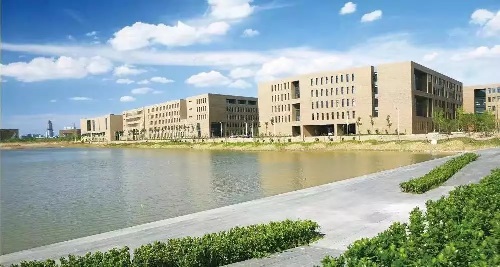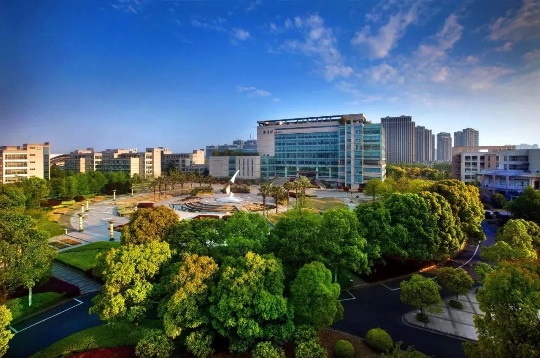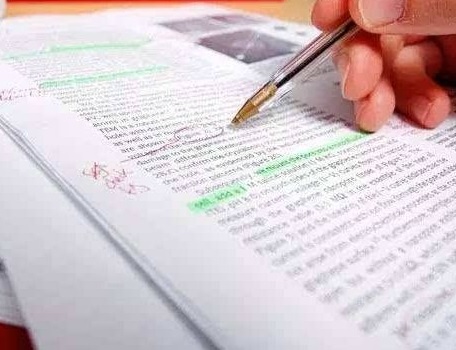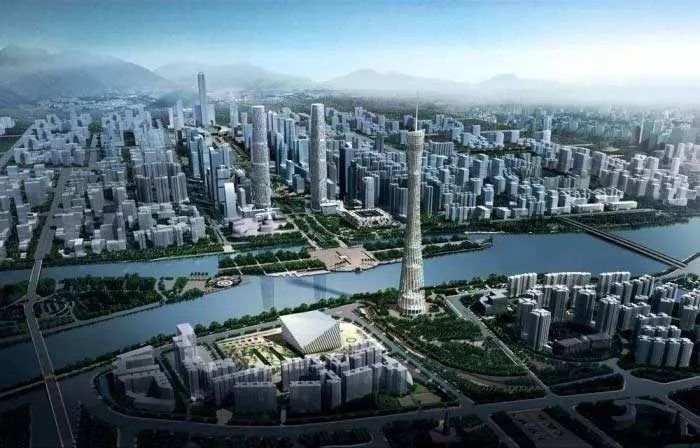Mainland / overseas US academics called on the U.S. government to speak of the South China Sea issue should be carefully
http://www.cdnews.com.tw 2012-08-06 17:44:37
River waves / organize the nation's China Youth Federation, the United States and China Junior Chamber International, the nation's ethnic Chinese Outstanding Youth Association, the North American Cross-Strait Cultural Exchange Association, Chinese American youth and promoting reunification, the United States and Vietnam Cambodia-Laos ethnic Chinese Youth Association, North America, Shenzhen Youth Federation , the United States in Chicago and a number of the nation's large overseas academic societies in Los Angeles on August 4, jointly issued an open letter to express our strong condemnation of the South China Sea issue a statement published by the U.S. Department of State on August 3, and urged the U.S. government should respect the facts, and respect for the Chinese mainland and Taiwan have the status of the sovereignty of the South China Sea. South China Sea issue should be careful to speak, not to artificially inflate and create peace in the Asia-Pacific region unstable factors. The letter pointed out that the South China Sea issue a statement issued by the U.S. State Department is outdated and inconsistent with the facts, but also irresponsible. Unreasonable demands and attempt to change the sovereignty of the status quo in the South China Sea countries, issued a false and illusory signal. Peace in the South China Sea and the Asia-Pacific region, lead to instability. A world of turmoil and instability, not peace-loving nation's Asian and Pacific Islander people would like to see. The U.S. government should give full consideration to the perception of the nation's ethnic Chinese populations. Chinese people in America know that the so-called disputed area in the South China Sea has always been China's inherent territory, but also in various international conferences and international conventions have a common understanding. The politicians of the individual countries to attract public attention, from time to time use these irresponsible to stir up regional peace and stability in the South China Sea and their national interests, without any benefits. For such extreme acts of favoritism, fairness and justice only for the international community done to bring the extremely negative impact. We strongly condemn the State Council, The South China Sea problem statement, we also call the U.S. government concerned about the objectivity and impartiality of the role of the South China Sea issue, should respect the facts and respect the Chinese mainland and Taiwan have the status of the South China Sea sovereignty, not to artificially inflate and create peace in the Asia-Pacific region instability.(AACYF Los Angeles)
ICE Case Studies
Diaoyu Islands Dispute
[http://www1.american.edu/TED/ice/images/cn_flag.gif][http://www1.american.edu/TED/ice/images/jp-flag.gif][http://www1.american.edu/TED/ice/images/tw-flag.gif]
ICE Case Studies
Diaoyu Islands Dispute



CASE NUMBER:30
CASE IDENTIFIER:DIAOYU
CASE DESCRIPTION:DIAOYUTAI ISLANDS DISPUTE
Draft Author:Cheng-China Huang(June 1997)

1. Abstract
The on-going sovereignty dispute between Japan, the People's Republic of China(PRC)and the Republic of China(ROC)on Taiwan over the Diaoyu/Senkaku Islands [1] raises a number of significant issues relative to island and maritime disputes in Asia Pacific rim. In general, the issue can be identified by three points. First of all, none of the three governments want the issue to become a source of difficulties in their bilateral relationships. However, the three governments are driven by a number of domestic and international political factors. Moreover, while the issue of ownership of natural resources is the main point in this dispute, it is believed that the dispute itself is not simply about "oil". Political issues related to other disputes and pressure from domestic interests make this dispute complicated. Finally, while conflict between the three countries over the dispute is unlikely, so is any form of resolution, or joint exploitation of the area's natural resources.
International law presents many unanswered questions about the Diaoyu Islands dispute. What is the nature of discovery and occupation for uninhabited islands? Were the Diaoyu Islands part of Taiwan or Okinawa before 1895? Finally, how will the disputed islands affect maritime jurisdiction? In order to understand the detail of the Diaoyu Islands dispute, this case study will observe the relationship between the Diaoyu conflict and the related environmental issues.
2. Description
Diaoyu Islands are a group of eight uninhabited islands located in the East Asia Sea, nautical miles Northeast of Taiwan and 240 nautical Southwest of the Liu Chiu Islands(Ryukyu Islands, also known as Okinawa), on the Chinese side of the Okinawa shelf(see map). The largest island is two miles long and less than a mile wide.
The term "Diao Yu Tai" in Chinese means "Fishing Platform". The earliest historical records of the islands are Chinese navigation records from 1403, and references to Diaoyu Islands occur in Chinese logs and Chinese maps of the Liu Chiu chain from that time. For several centuries, the Diaoyu Islands have been administered as one part of Taiwan and have always been used exclusively by Chinese fishermen as an base for fishing, both before and after World War II.(For more detail, see Prof. Kiyoshi Inoue's paper in 1972 "Diaoyu Islands and other islands are Chinese Territory")
In 1874, Japan took Liu Chiu Islands(Okinawa)from China by force when Chinese Ching Dynasty was involved in several wars with other foreign countries. However, the Diaoyu Islands still remained under the administration of Taiwan, a part of China. After being defeated by Japan in the Sino-Japan War, China ceded Taiwan to Japan under the Shimonoseki Treaty. As a part of Taiwan, the Diaoyutai Islands belonged to Japan at that time.
Taiwan was returned to China at the end of World War II in 1945 based upon the 1943 agreement of the Cairo and Potsdam Declarations. The Japanese government accepted the terms that stated in these documents"...that all the territories Japan has stolen from the Chinese, such as Manchuria, Formosa, the Pescadores, shall be restored to the Republic of China.
In 1951 Article 2 of the Treaty of Peace with Japan signed by Japan and the Allied Powers(excluding both the ROC and the PRC)stated that, "Japan renounces all right, title and claim to Formosa and the Paracels". Article Four of the separate peace treaty signed between Japan and the ROC in 1952 declared that all agreements between Japan and China before 1941 were null and void. [2] As stated above, it is reasonable to take the mean that Diaoyu Islands should be returned to China because the Diaoyu Islands are one part of Taiwan. However, Japanese have maintained that the islands should not be included in these treaties. This issue remain quiet through the 1950s and 1960s probably because the these small uninhabited islands held little interests for the three countries.
The Diaoyu Islands issue had not been raised until ECAFE(United Nations Economic Commission for Asia and the Far East)suggested possible large hydrocarbon deposit in the waters off Diaoyutai in 1969(actually, no oil has ever been found and no systematic search for oil has yet been carried out). In 1970, the U.S. and Japan signed the Okinawa Reversion Treaty which included Diaoyu Islands as part of Okinawa to be returned to Japanese rule. This Treaty was immediately challenged by both ROC(Taiwan)and PRC(mainland China). The dispute came into the open when the Japanese government delivered a note to the ROC government stating that its bids to exploit the oil potential around the island were not valid. [3] In September 1970, a Taiwanese gunboat planted the ROC flag on the islands. In December, the PRC intervened in this dispute, stating that the Diaoyu(and Taiwan)were China's territory and that exploitation of the area by foreign countries would not be tolerated. [4] At first the U.S. government appeared to support the Japanese claim. However, because the U.S. government wanted to improve relations with the PRC, it then took a neutral stance over the dispute. The U.S. claimed that its involvement could, "...in no way prejudice any underlying claims... The United States...considers that any conflicting claims are a matter for resolution by the parties concerned." [5] Since this time, the U.S. government has studiously avoided involvement in the dispute.
Since the reversion of Okinawa to Japanese rule, the Japanese government has repeatedly sent its naval forces to eject Chinese fishermen from this area. A crisis occurred in 1978 when the Japanese right wing political group Nihon Seinensha(Japanese Youth Federation)illegally erected a lighthouse on Daioyutai in an attempt to legitimize Japanese territorial claim over the islands. The event raised angry protests from Chinese communities all around the world. However, this was over-shadowed by the signing of the Sino-Japanese Peace and Friendship Treaty in October 1978. Both Chinese and Japanese government had agreed to shelve the issue for future resolution.
Another crisis of Diaoyutai dispute concerned Japan and Taiwan in 1990. On 29 September, the Japanese government decided it would allow the Nihon Seinensha to renovate a lighthouse they had erected on the islands in 1978. [6] Criticism from the independence leaning opposition party in Taiwan, the DPP(Democratic Progressive Party), Wu Tung-yi, the KMT mayor of the southern Taiwanese city of Kaohsiung, organised two fishing boats to transport the "Taiwan Area Athletic Meet"[7] to the islands with an Olympic torch to demonstrate the ROC's claim to the Diaoyutai. This event showed that the Diaoyu Islands issue was not only simply a problem of who owned the natural resource, it also had been used by opposition parties as a tool to attack the government's ability to handle this issue.
 In July of 1996, the right wing group Nihon Seinensha made their third illegal landing on Diaoyutai, erecting a new lighthouse on the northern islet. Though this lighthouse was unexpectedly destroyed by a typhoon later, the group soon built another lighthouse on September 9th. Again, the Chinese communities, especially from Hong Kong and Taiwan, held an even larger protest against Japanese government. The issue is still going on among the three countries.
In July of 1996, the right wing group Nihon Seinensha made their third illegal landing on Diaoyutai, erecting a new lighthouse on the northern islet. Though this lighthouse was unexpectedly destroyed by a typhoon later, the group soon built another lighthouse on September 9th. Again, the Chinese communities, especially from Hong Kong and Taiwan, held an even larger protest against Japanese government. The issue is still going on among the three countries.
3. Duration:In Progress(1945-now)
| 1895 |
China ceded Taiwan and Diaoyutai Islands to Japan after Sino-Japan War under the Shimonoseki Treaty. |
| 1945 |
Japan surrendered, Taiwan returned to China under Cairo and Potsdom Declarations. |
| 1952 |
The U.S. government administrated Okinawa and the Diaoyutai under San Francisco Treaty |
| 1968 |
The United Nations reported that there might be existing of hydrocarbon deposit in the waters off Diaoyutai |
| 1970 |
The U.S. and Japan signed the Okinawa Reversion Treaty which included Diaoyutai Islands as part of Okinawa |
| 1971 |
More than five thousands students protested against Japan in the United States. |
| 1972 |
The Japanese government claimed sovereignty over Diaoyutai Islands following Chinese government's formal claim |
| 1978 |
Japan established official relationship with China. Two governments agreed to shelve the issue |
| 1989 |
September, Japan expelled Taiwanese boats operated around the Diaoyutai Islands |
| 1990 |
September, the Japanese government recognized the lighthouse which was made by the right-wing group in the Diaoyutai Island. |
| October, China formally protested again Japanese action in Diaoyutai dispute. |
| 1992 |
25, February, China passed the territorial sea law, which included the Diaoyutai as part of China's territory |
| 1996 |
15, July, Japanese Youth Federation illegally erected another lighthouse. Again, Chinese held even larger activities to protect the Diaoyutai Islands |
4. Location
Continent:Asia
Region:East Asia
Country:Japan The Diaoyutai Islands located 120 miles northeast of Taiwan on the continental shelf and are separated from the Liu Chiu Islands(Ryukyu Islands)by a deep underwater trench(over 1000 meters deep). There are five small volcanic islands and three rocky outcroppings in the Diaoyu group. Most of the islets are clustered around the largest island, Uotsuri/Diaoyu, which covers roughly 8 hectares and lies 170 km northeast of Taiwan and 410 km west of Okinawa. Two outlying islets, Kobi- sho/Huangwei Yu and Akao-sho/Chiwei Yu, are located 31 km and 108 km from Uotsuri/Diaoyu Island, respectively. None of the islets is inhabited. All the Diaoyu Islands lie within the 200-m isobath, at the edge of the Asian geologic continental shelf. The 2,270-m-deep Okinawa Trough lies seaward of the Diaoyu Islands, separating them from the nearest undisputed Japanese islands. In terms of distance, the distance between Taiwan and the Diaoyu Islands is indeed shorter than the distance between Okinawa and Diaoyu Islands. It seems reasonable to include the Diaoyu Islands as a part of Taiwan's territory.
5. Actors:China, Japan, and Taiwan
Although the on-going dispute has been underway since World War II, the three government have tried to keep the dispute as low-profile as possible because they do not want the issue to lead to a deterioration in their wider bilateral relations. In fact, there has been no military conflict among the three countries because of this dispute. This low posture over Diaoyutai Islands can be illustrated by the Treaty of Peace and Friendship, which was signed by China and Japan. In this treaty, Deng Xiaoping, the China's Vice-Premier stated that both governments had agreed to shelve the issue in 1972 and that this was still the policy of both governments,
"It is true that the two sides maintain different views on this question...It does not matter if this question is shelved for some time, say, ten years. Our generation is not wise enough to find common language on this question. Our next generation will certainly be wiser. They will certainly find a solution acceptable to all." [8]
6. Type of Environmental Issue:Resource(Oil)
This dispute was not an issue until the UN "suggested" that there might be oil deposit in the Diayutai area in early 1970s. Before that time, the three government seemed to less enthusiastic about the Diaoyutai Islands. The issue is related to the ownership of natural resource and the territory it is on.
However, as mentioned above, this dispute was not simply about "oil". It also involved other circumstances in the three countries. Clearly, the Diaoyutai has a strong implication of nationalism. National pride concerning the islands is an issue for the three countries, especially for the Chinese and Taiwanese given the recent history of Japanese aggression.
An even more important significance of the Diaoyutai Islands is its implication for other island and maritime disputes involving China, Japan and Taiwan. For the PRC, the Diaoyutai issue is linked to China's other maritime claims, particularly with regard to the South China Sea. The reason that Beijing government cannot soften their attitude toward the Diaoyutai is clear. If they soften their posture over the Diaoyutai, they might be considered as softening of their position on the Spratly and Paracel island disputes in the South China Sea. We also should not forget that because the Diaoyutai Islands is part of Taiwan, China's sovereignty claim on Diaoyutai also implied that Taiwan is one part of China.
For the Japanese, any softening on the Diaoyutai might have implications for the more serious territory dispute with Russia over the question of the "Northern Territories". In addition, the islands have become an important nationalist symbol that used by the right-wing parties to attack the current government. The most critical point is that the right-wing groups can make gestures about the Diaoyu Islands at any time and so cause serious problems for Japan's relations with both China and Taiwan. This is also concerned by the Japanese government.
For Taiwan, the government also wants the issue to die down because Taiwan's trade with Japan is vital to its economy. The absence of diplomatic ties with Japan make it difficult for Taiwanese to lodge protests. If Taiwan uses some economic measures such as sanctions, Taiwan will hurt itself because of heavy dependence on Japanese products. From economic perspective, this probably is the key reason that Taiwan wants to abate the dispute.
7. Type of Habitat:Ocean
8. Act and Harm Sites:
Act Site Harm Site Example
China China Sea Commons Oil Spill into Sea
9. Type of Conflict:Interstate
10. Level of Conflict:Warthreat
11. Fatality Level of Dispute:0
12. Environment-Conflict Link and Dynamics:Direct
The conflict among China, Japan and Taiwan over the sovereignty of Diaoyutai Islands is directly linked to the environmental issue of territory dispute. The sovereignty claim on the Diaoyutai by each of the three countries is the direct cause to the conflict. The following diagram illustrates the relationship among the conflict, nationalism, sovereignty and bilateral relations.

The story started from the sovereignty claim over the Diaoyutai by each of the three countries. The sovereignty claim was due to the possible oil existing in the Diaoyu Islands area. Thus, natural resource has a positive both on sovereignty and the Diaoyutai conflict. Sovereignty goal also raised nationalism in both Chinese and Japanese sides. In China or Taiwan, the nationalists linked Japan's actions on Diaoyutai with militarism and recalled the history that Japanese massacred 300 thousand Chinese in Nanjing in 1937. In Japan, nationalists used territory disputes as a tools to attack the government's policies. Thus, both the independent variables of sovereignty and nationalism were two important inputs for the Diaoyutai conflict.
It is also interesting to see that the Diaoyutai conflict has an inverse positive effect on sovereignty. As mentioned earlier, the sovereignty of Diaoyutai has a strong implication for Chinese concerning with their sovereignty in the South China Sea. For Japanese, the Diaoyutai dispute also implied Japanese attitude toward the territory disputes with Russia. Even for the Taiwanese, claiming Diaoyutai as their territory might be linked to formal independence.
Both nationalism and sovereignty may contribute to negative effects on bilateral relations. Considering the bilateral relations, the three countries want to die down the issue instead of fighting each other. The good bilateral relations, particularly China with Japan; Japan with Taiwan, had reduced the tension on the Diaoyutai dispute.
13. Level of Strategic Interest:Region
14. Outcome of Dispute:Stalemate
15. Related ICE and TED Cases
16. Relevant Websites and Literature
Relevant Literature
1. Tao Cheng, "The Sino-Japanese Dispute over the Tiao-yu-tai(Senkaku)Islands and the law of Territorial Acquitition," Virginia Journal of International Law 14(1973-74):248-60.
2. Lee Wei-chin, "Trouble under the Water:Sino-Japanese Conflict of Sovereignty on the Continental Shelf in the East China Sea," Ocean Development and International Law 18(1987):586, pp.143-147.
3. Kim Young-tae, "Sino-Japanese Relations:The Making of the Peace and Friendship Treaty" Ph.D thesis, George Washington University, 1990, pp.219-230.
4. Tretiak Daniel, "The Sino-Japanese Treaty of 1978:The Senkaku Incident Prelude" Asian Survey Vol.18, No.12, December 1978, pp.1235-1249.
5. Kim Byung-chin, "The Northeast Asian Continental Shelf Controversy:A Case Study in Conflict Resolution Among South Korea, Japan, China and Taiwan", PH.D thesis Florida State University, 1980.
6. Bejing Review. History proves Diaoyu Islands are China's territory Sep 22-29, 1996, v39n39, p.10
7. Hifumi, Arai. "Angry at China? Slam Japan" Far Eastern Economic Review Otc 3, 1996, v159n40, p.21
8. Economist, Senkaku Islands:A Sporting Effort Oct 27, 1990, v317n7678, p.37-38.
9. Hyer Eric. "The South China Sea disputes:Implications of China's earlier territorial settlements." Pacific Affairs Spring 1995, v68n1, p.34-54.
10. Kang, K Connie. "A unifying campaign" Los Angeles Times, Oct 3, 1996, B, 3:2
Relevant Web Sites
 Diaoyutai Defense Coalition of Northern California
Diaoyutai Defense Coalition of Northern California
 Bao Diao WWW site in Hong Kong
Bao Diao WWW site in Hong Kong
 SinaNet for Diaoyu Islands
SinaNet for Diaoyu Islands
 the Chinese Commercial News of Manila, Philippines
the Chinese Commercial News of Manila, Philippines
 Chinas cape -- Chinese Web Index for Protection of Diaoyu Islands
Chinas cape -- Chinese Web Index for Protection of Diaoyu Islands
 Bao Diao Logo
Bao Diao Logo
 Diao Yua Index
Diao Yua Index
 Diaoyu Page
Diaoyu Page
 Diao Yu Tai Island Incident
Diao Yu Tai Island Incident
 Hong Kong Internet
Hong Kong Internet
 Ming Pao Daily News
Ming Pao Daily News
 Stop Japanese Invasion
Stop Japanese Invasion
 The Democratic Party, Hong Kong
The Democratic Party, Hong Kong
 The Diaoyu Islands Are Part of China's Territory
The Diaoyu Islands Are Part of China's Territory


1. Japan calls the islands Sento Shosho or Senkaku Retto. The People's Republic of China terms them Diaoyu Tai, and the Republic of China renders the same Chinese characters in a different romanization system as Tiao Yu Tai.[back]
2. Cairo Declaration, November 26, 1943, in Chiu op. Cit. P.215.[back]
3. Tao Cheng, op.cit. Pp.242-3.[back]
4. Tao Cheng, p.243.[back]
5. United States State Department, reprinted in Park, p.37. For the motives behind the U.S. government's changing stance see John Welfield, Empire in Eclipse:Japan in the Postwar American Alliance System(London:Athlone Press, 1988)p.310. Japanese Foreign Minister Fukuda criticised the Americans for being "evasive" over the status of the islands, FEERApril 1,1972, p.4.[back]
6. The Independent(London)Monday 22 October, 1990.[back]
7. Taiwan holds th "Taiwan Area Athletic Meet" in different city each year. When the Diaoyu conflict went on in 1990, the Meet was held in Kaohsiung. In order to defense the opposition party DDP's criticism, the KMT mayor of Kaohsiung thus organized fishing boats to demonstrate Taiwan's claim to the Diaoyu Islands.[back]
8. Deng Xiaoping, quoted in Chi-kin Lo China's policy Toward Territorial Disputes:The Case of the South China Sea Islands(London:Routledge, 1989)pp.171-2. The Taiwanese side stated that the agreement between Japan and China in no way altered Taiwan's title to the Diaoyutai, Zhongguo Shibao 13 August 1978, Zhongyang Ribao 13 August, 1978.[back]


 Diaoyutai Defense Coalition of Northern California
Diaoyutai Defense Coalition of Northern California
 Bao Diao WWW site in Hong Kong
Bao Diao WWW site in Hong Kong
 SinaNet for Diaoyu Islands
SinaNet for Diaoyu Islands
 the Chinese Commercial News of Manila, Philippines
the Chinese Commercial News of Manila, Philippines
 Chinas cape -- Chinese Web Index for Protection of Diaoyu Islands
Chinas cape -- Chinese Web Index for Protection of Diaoyu Islands
 Bao Diao Logo
Bao Diao Logo
 Diao Yua Index
Diao Yua Index
 Diaoyu Page
Diaoyu Page
 Diao Yu Tai Island Incident
Diao Yu Tai Island Incident
 Hong Kong Internet
Hong Kong Internet
 Ming Pao Daily News
Ming Pao Daily News
 Stop Japanese Invasion
Stop Japanese Invasion
 The Democratic Party, Hong Kong
The Democratic Party, Hong Kong
 The Diaoyu Islands Are Part of China's Territory
The Diaoyu Islands Are Part of China's Territory













 I.
I.  In July of 1996, the right wing group Nihon Seinensha made their third illegal landing on Diaoyutai, erecting a new lighthouse on the northern islet. Though this lighthouse was unexpectedly destroyed by a typhoon later, the group soon built another lighthouse on September 9th. Again, the Chinese communities, especially from Hong Kong and Taiwan, held an even larger protest against Japanese government. The issue is still going on among the three countries.
In July of 1996, the right wing group Nihon Seinensha made their third illegal landing on Diaoyutai, erecting a new lighthouse on the northern islet. Though this lighthouse was unexpectedly destroyed by a typhoon later, the group soon built another lighthouse on September 9th. Again, the Chinese communities, especially from Hong Kong and Taiwan, held an even larger protest against Japanese government. The issue is still going on among the three countries.

 11.
11. 








